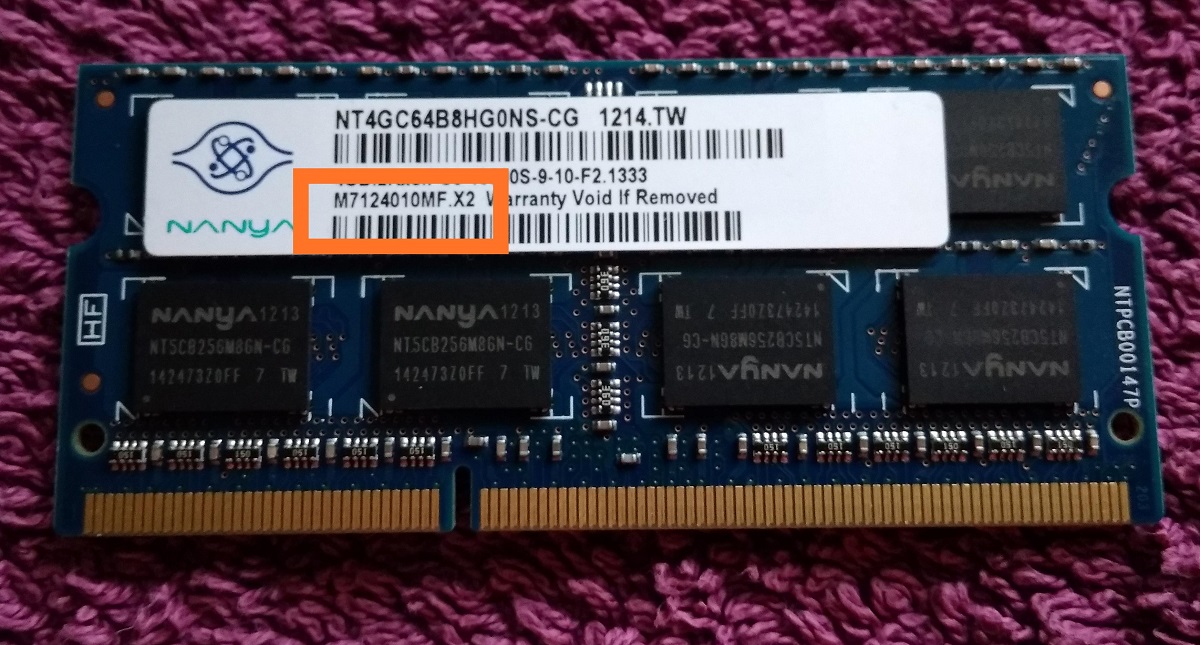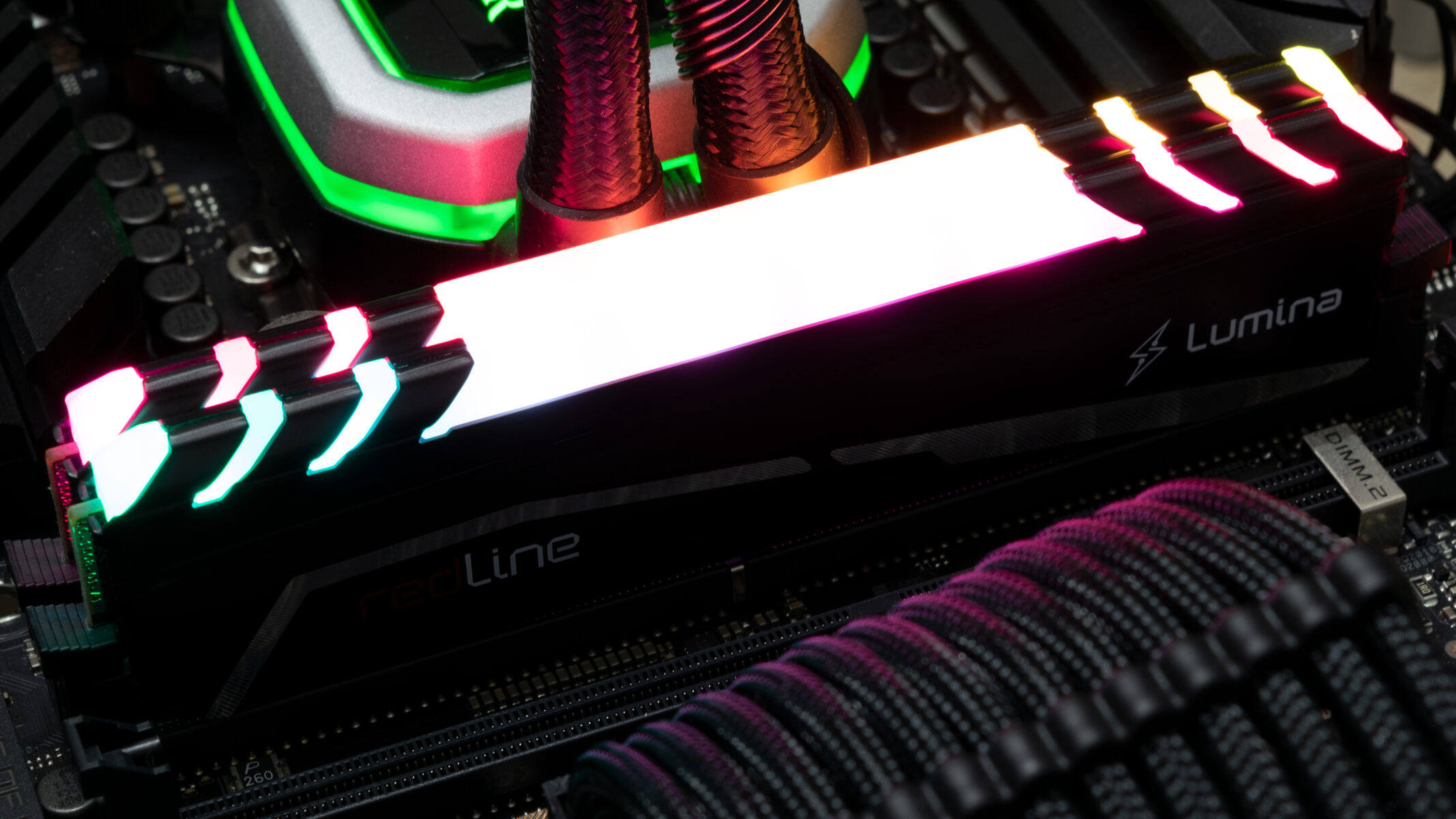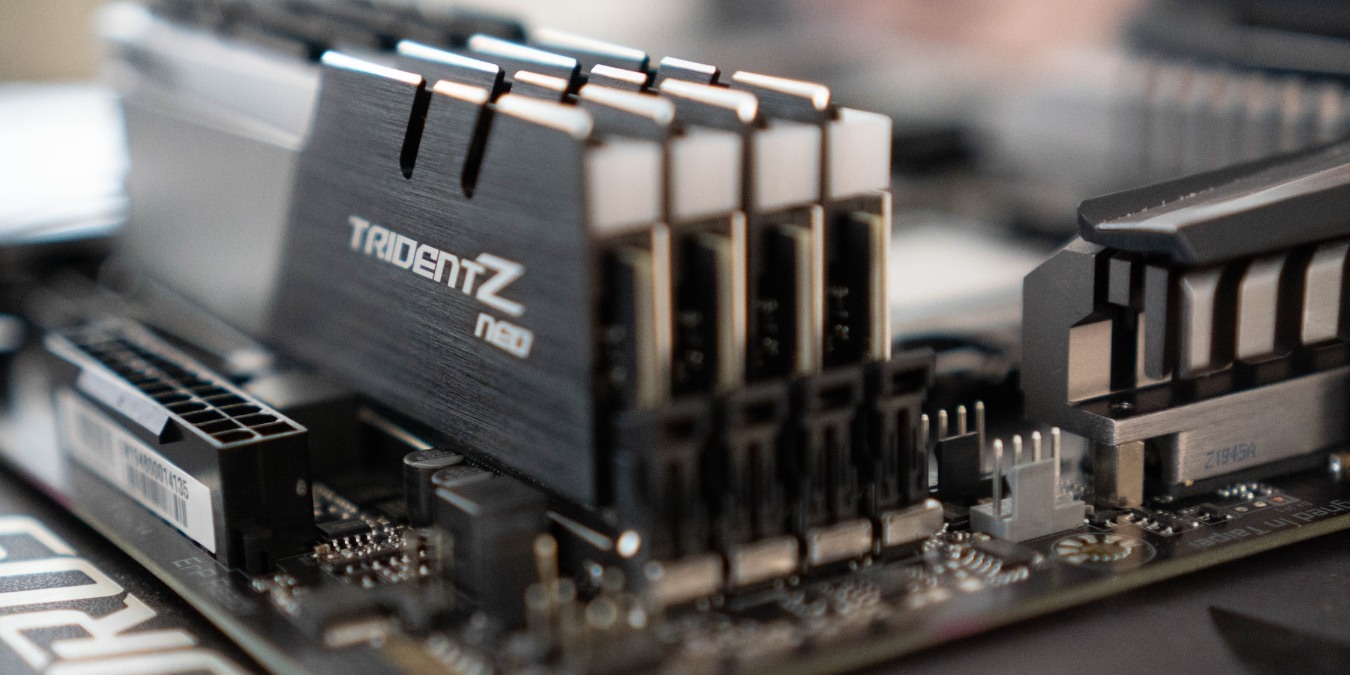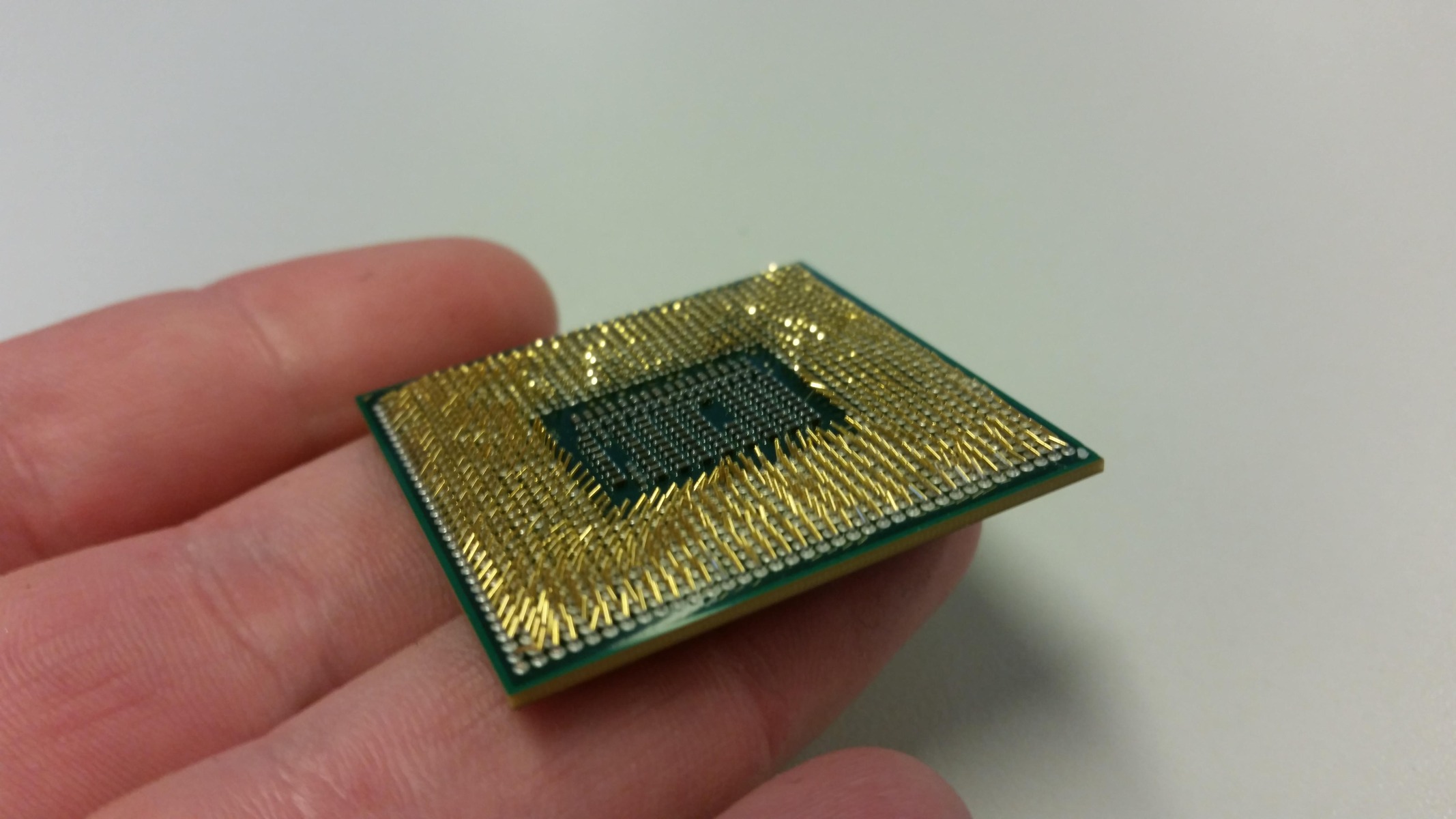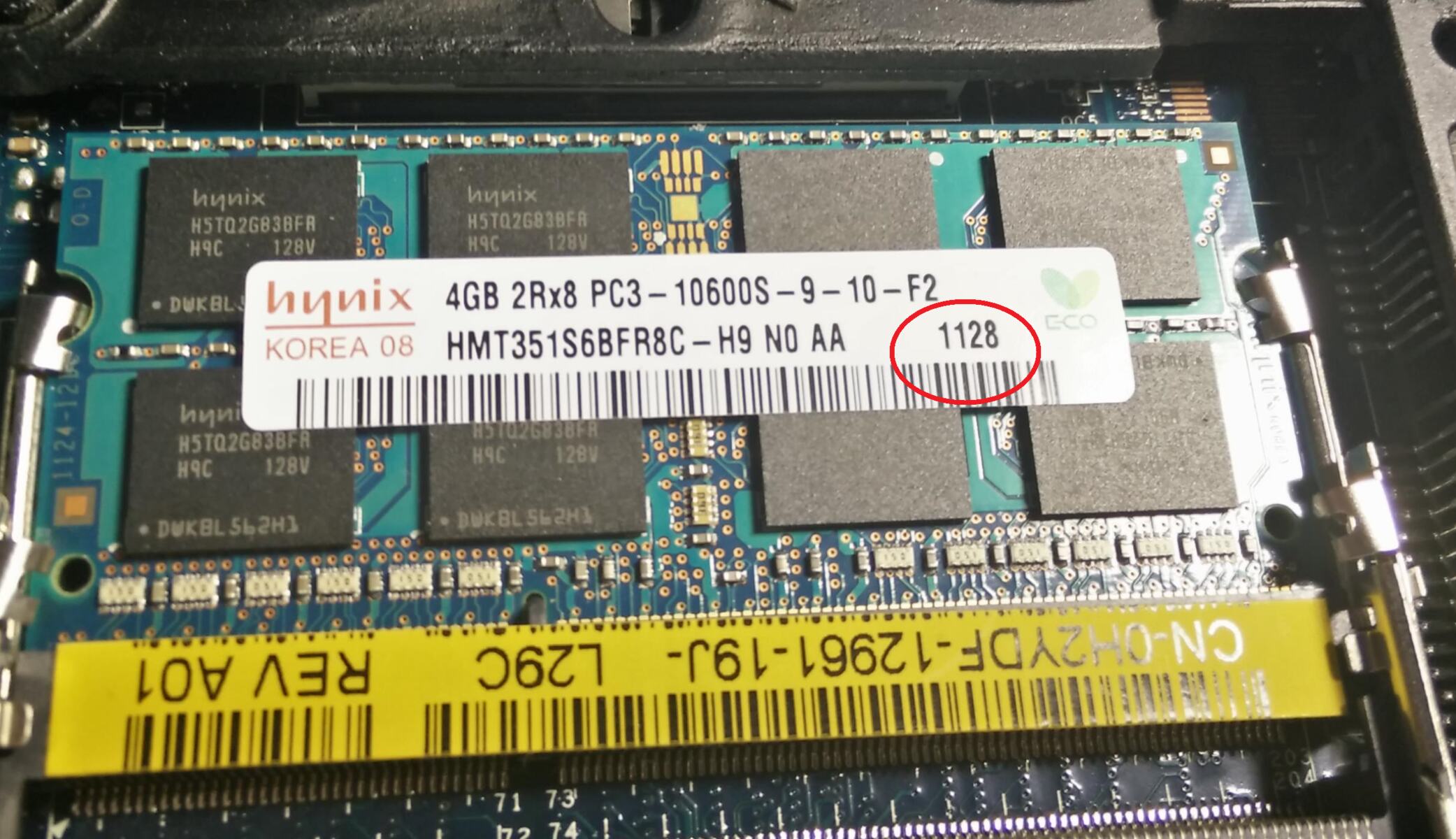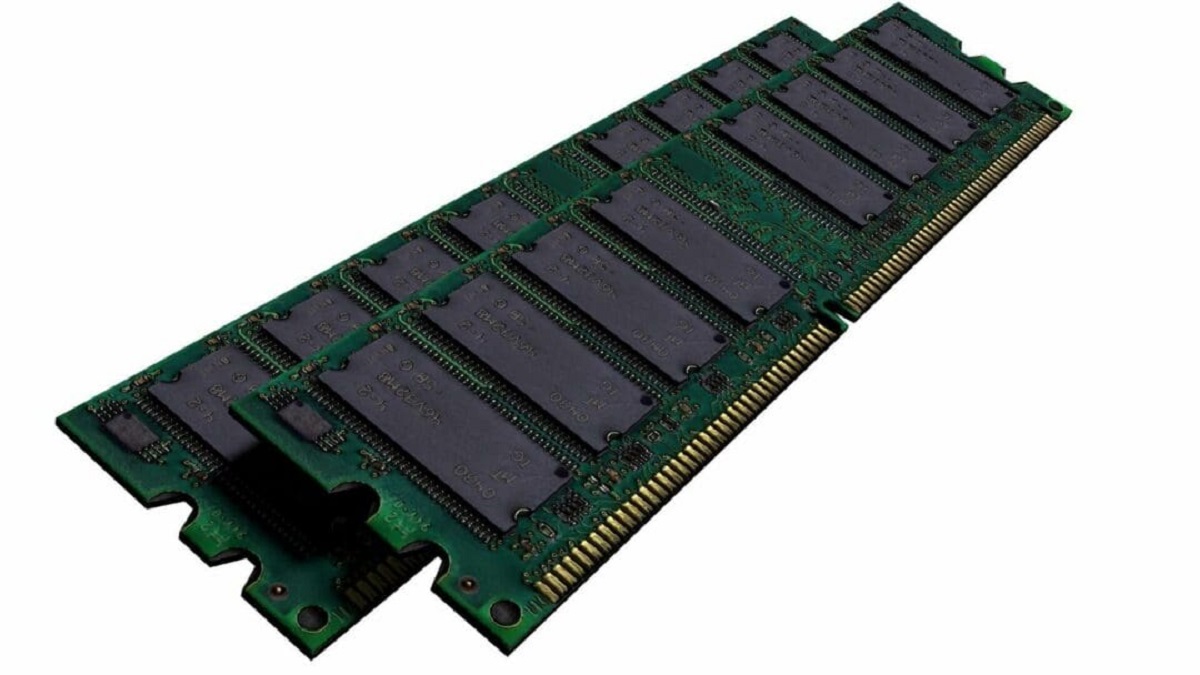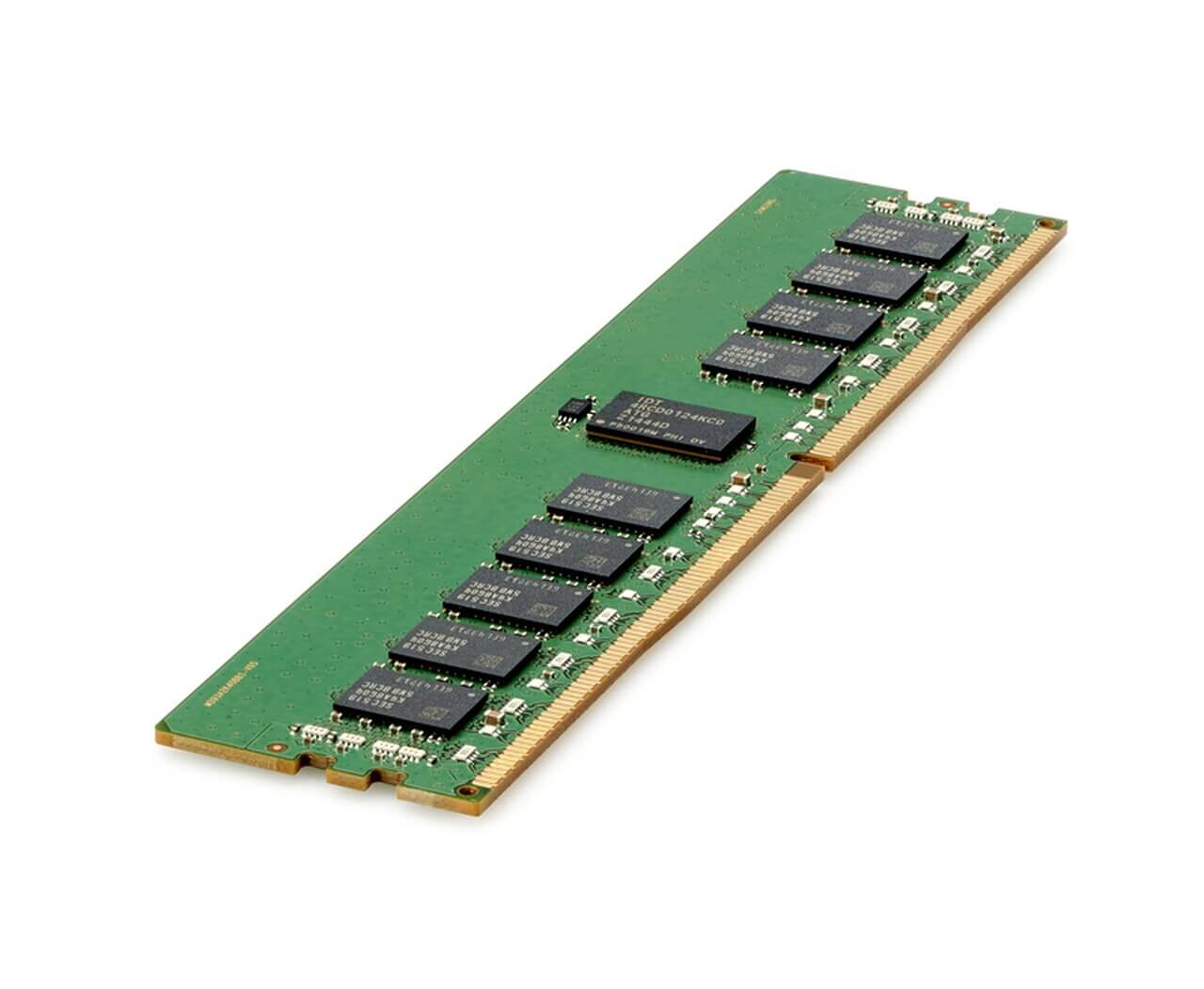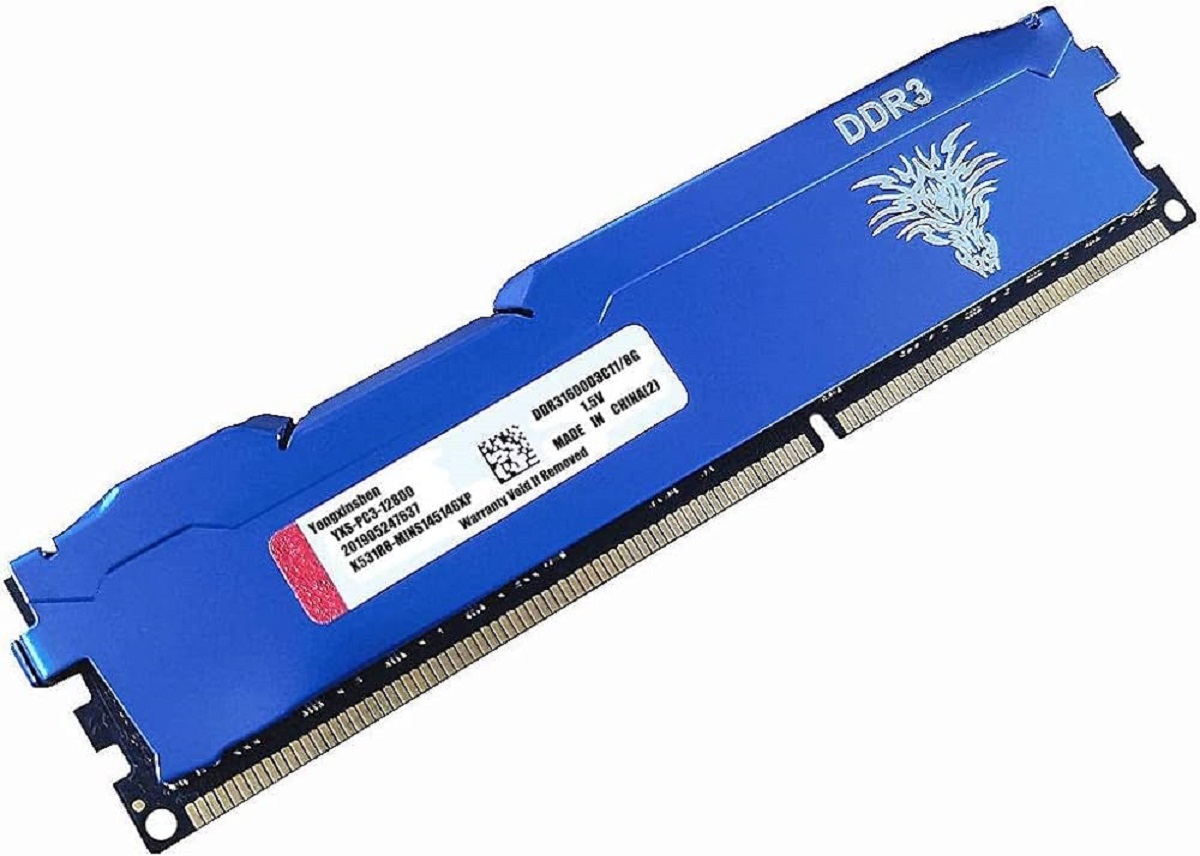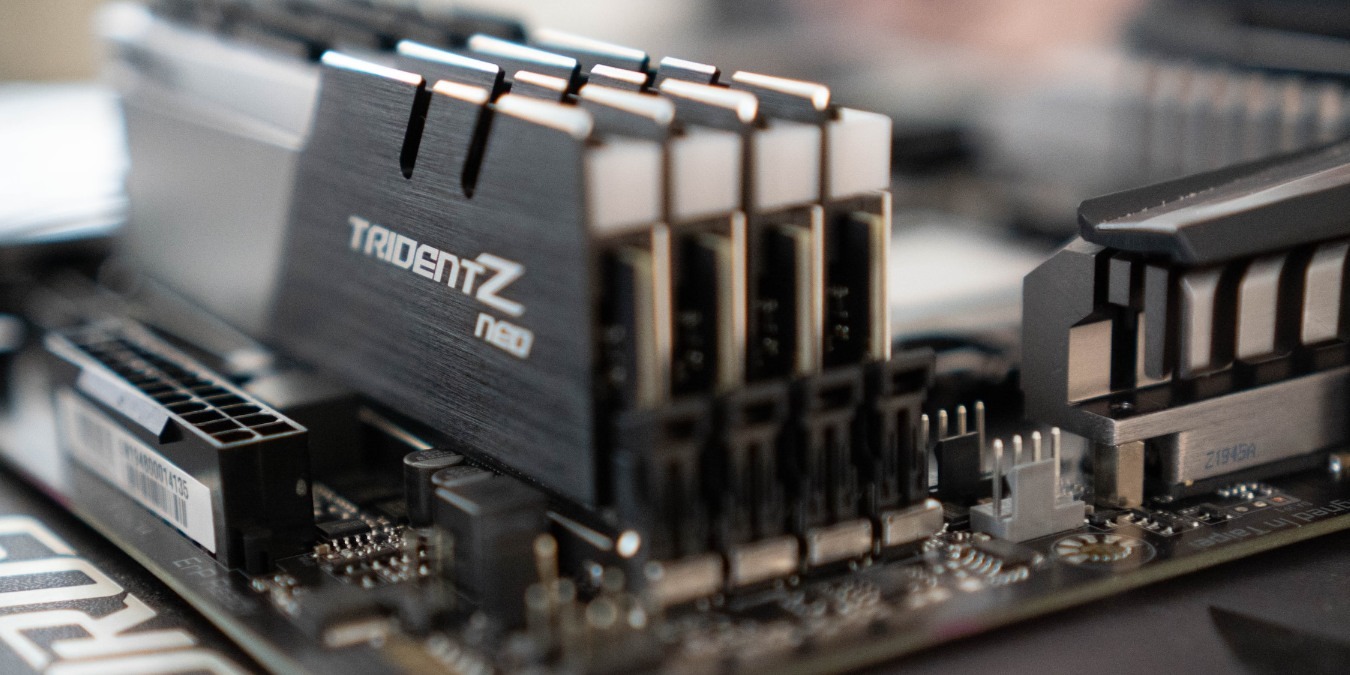Introduction
Welcome to our guide on understanding the numbers in RAM! If you’ve ever wondered what those mysterious digits mean when choosing a new RAM module, you’ve come to the right place. RAM, or Random Access Memory, is a critical component of any computer system, playing a key role in determining its performance and responsiveness. In this article, we will delve into the world of RAM and demystify the numbers that represent its specifications.
As technology continues to advance rapidly, the need for fast and reliable memory has become paramount. With so many options available in the market, it can be overwhelming to decipher the meaning behind different RAM numbers and acronyms. We’re here to simplify things for you.
In the following sections, we will explore the importance of RAM, discuss memory units, dive into terms like speed, bandwidth, frequency, and CAS latency, and guide you through the various RAM configurations and upgrading options. By the end of this article, you will have the knowledge to make informed decisions when it comes to selecting the right RAM for your system.
So, whether you are a casual user looking to upgrade your computer’s RAM or a tech enthusiast interested in learning more about this fundamental component, let’s embark on this journey together. We will unravel the mysteries of RAM numbers and empower you to make smart choices that optimize your computer’s performance. Let’s get started!
What is RAM?
RAM, short for Random Access Memory, is a fundamental component of a computer system that serves as the temporary storage for data that the CPU (Central Processing Unit) needs in order to carry out tasks. Unlike the long-term storage provided by hard drives or solid-state drives, RAM provides the CPU with fast and temporary access to data, allowing for quick retrieval and processing.
Think of RAM as a workspace for the CPU. When you open an application or perform any task on your computer, the necessary data is loaded into RAM for the CPU to access easily. This temporary storage allows the CPU to retrieve and manipulate data at a much faster rate than if it had to access the information directly from the hard drive or other long-term storage devices.
RAM plays a crucial role in determining a computer’s performance and multitasking capabilities. The more RAM a computer has, the more data it can store and access simultaneously, which leads to improved speed and responsiveness. This is especially important when running resource-intensive applications such as video editing software or modern video games, which require large amounts of data to be processed quickly.
Additionally, RAM also enhances overall system performance by caching frequently accessed data. This means that if a specific piece of data is required multiple times, the CPU can quickly retrieve it from the RAM instead of accessing it from slower storage devices repeatedly. This caching mechanism results in significant performance gains, as the CPU can access the data much faster, leading to smoother and more efficient operation.
It is important to note that RAM is a volatile form of memory, meaning that its content is lost when the computer is powered off or restarted. This is why it is commonly referred to as “temporary” or “volatile” memory. To maintain data integrity and prevent data loss, it is essential to regularly save work and store important files on non-volatile storage devices such as hard drives or solid-state drives.
In the next section, we will explore the different memory units used to measure RAM capacity and storage. Understanding these units is crucial when selecting the right RAM module for your system.
Importance of RAM
RAM, or Random Access Memory, plays a vital role in the performance and functionality of a computer system. It serves as a bridge between the CPU and other storage devices, facilitating quick data access and manipulation. The importance of RAM cannot be overstated, as it directly affects the speed, multitasking capabilities, and overall responsiveness of a computer.
One of the primary benefits of having sufficient RAM is improved system performance. When a computer runs out of RAM, it starts relying on the slower hard drive or solid-state drive for data storage, resulting in a noticeable decrease in speed. Insufficient RAM can lead to sluggishness, lag, and frequent freezing of applications. Investing in adequate RAM allows the computer to store and access more data in its temporary memory, leading to faster execution of tasks and smoother operation.
In addition to speed, RAM also enables efficient multitasking. With more RAM, a computer can run multiple applications simultaneously without significant performance degradation. This is particularly important for individuals who work with resource-intensive applications, such as graphic designers, video editors, and gamers. Having sufficient RAM ensures that these applications can access the necessary data without competing for limited resources, resulting in seamless multitasking and improved productivity.
Another key advantage of RAM is its role in gaming. Modern video games often require large amounts of memory to store and access game assets, textures, and other data in real-time. Insufficient RAM can lead to lower frame rates, longer loading times, and overall poor gaming experience. By investing in ample RAM capacity, gamers can enjoy smoother gameplay, faster loading, and increased graphical fidelity.
Moreover, RAM also plays a crucial role in virtualization and running virtual machines. Virtualization allows users to create multiple virtual operating systems on a single physical machine. This requires allocating a portion of the system’s RAM to each virtual machine. Sufficient RAM ensures that each virtual machine has the necessary resources to operate efficiently, preventing performance bottlenecks and ensuring smooth virtualization.
In summary, RAM is a critical component of a computer system and has a significant impact on its performance. Adequate RAM capacity allows for faster data access, smoother multitasking, improved gaming experience, and efficient virtualization. When considering system upgrades or building a new computer, investing in ample RAM is essential to unlock the full potential of your system.
Understanding Memory Units
When it comes to understanding RAM, it is crucial to familiarize yourself with memory units — the measurement systems used to quantify the capacity and storage of RAM modules. These memory units provide a standard way to express the amount of data that a RAM module can store or access.
The most basic unit of memory is the byte, which represents a single character of data. However, bytes on their own are insufficient for measuring the capacities of modern RAM modules, as they are relatively small. Instead, memory units such as kilobytes (KB), megabytes (MB), gigabytes (GB), and even terabytes (TB) are commonly used.
A kilobyte (KB) is equal to 1024 bytes. It is often used to express the memory capacities of early computer systems. With technology advancements, the need for larger memory capacities arose, leading to the use of megabytes (MB). One megabyte is equal to 1024 kilobytes, providing a significant increase in storage space.
The gigabyte (GB) is the most familiar memory unit used today. One gigabyte is equal to 1024 megabytes, and it represents a substantial increase in capacity compared to kilobytes and megabytes. GBs are commonly used to measure the capacities of RAM modules available in the market.
As technology progresses, larger memory units such as terabytes (TB) have become more prevalent. One terabyte is equal to 1024 gigabytes, providing an immense amount of storage capacity. However, it’s worth noting that terabyte-sized RAM modules are not commonly found in consumer-grade systems. These units are more commonly used to express the capacities of long-term storage devices such as hard drives and solid-state drives.
It’s important to understand memory units when selecting a RAM module for your system. Consider the requirements of your applications and the specific tasks you perform to determine an appropriate memory unit. For everyday tasks and basic computing, a few gigabytes of RAM may be sufficient. However, for more resource-intensive applications or heavy multitasking, larger memory capacities may be necessary.
Next, we will explore the different types of RAM and their impact on system performance. Understanding these types will help you make informed decisions when choosing the right RAM for your system.
The Difference between Bytes, Kilobytes, Megabytes, and Gigabytes
When it comes to understanding data storage and memory capacity, it is essential to grasp the difference between various memory units, namely bytes, kilobytes, megabytes, and gigabytes. Each unit represents a different level of capacity and is commonly used to measure the storage and access capabilities of RAM modules and other storage devices.
At the most fundamental level, a byte is the basic unit of digital information. It represents a single character or data item, typically consisting of 8 bits. A byte can hold a wide range of data, including text, numbers, and other forms of information.
As data storage requirements increased, the need for larger units arose. The kilobyte (KB) was introduced to denote a larger capacity than a byte. One kilobyte equals 1,024 bytes, providing 1,024 times more storage capacity than a single byte. Early computer systems used kilobytes to measure their memory capacities.
As technology advanced further, the megabyte (MB) entered the scene. One megabyte is equal to 1,024 kilobytes or approximately one million bytes. This unit allowed for even greater storage capacity, accommodating larger files and more data-intensive applications. Megabytes quickly became the standard unit for measuring RAM and other storage devices.
With the exponential growth of data and the increasing demands of modern computing, the gigabyte (GB) emerged as the go-to memory unit. One gigabyte is equivalent to 1,024 megabytes, providing a significant leap in storage capacity. Gigabytes are commonly used today to measure the capacities of RAM modules, hard drives, and solid-state drives.
It’s important to note that the difference between these units is not a simple, linear progression. Each unit represents an exponential increase in storage capacity compared to its predecessor. For example, a gigabyte is not simply 1,024 times larger than a kilobyte, but rather 1,024 multiplied by 1,024 times larger. This exponential growth allows for the storage of increasingly larger files and more extensive data sets.
Understanding the difference between bytes, kilobytes, megabytes, and gigabytes is crucial when evaluating the storage capacity of your system. Consider the nature of your work, the size of files you handle, and the requirements of your applications. This will guide you in determining the appropriate memory unit and capacity to ensure optimal performance and storage capabilities for your needs.
Next, we will explore the relationship between RAM speed, bandwidth, and overall system performance. Understanding these concepts will assist you in selecting the right RAM for your system.
RAM Speed and Bandwidth
When it comes to RAM, speed and bandwidth are important factors to consider. The speed of RAM refers to how quickly it can deliver data, while bandwidth represents the amount of data that can be transferred within a given time frame. Understanding these concepts is crucial for optimizing system performance and selecting the right RAM for your needs.
RAM speed, measured in megahertz (MHz) or gigahertz (GHz), determines how quickly data can be stored and accessed from the memory module. A higher RAM speed means that data can be transferred to and from the RAM more quickly, resulting in improved system responsiveness and faster task execution.
The RAM’s speed is influenced by the clock speed, which determines how many cycles the RAM can perform per second. For example, if the RAM has a clock speed of 200 MHz, it can perform 200 million cycles per second. Newer RAM modules often have higher clock speeds, allowing for faster data transfer rates.
Bandwidth, on the other hand, refers to the maximum amount of data that can be transferred between the RAM and the CPU in a given time period. It is measured in gigabytes per second (GB/s) or megabytes per second (MB/s). A higher bandwidth indicates that a larger amount of data can be transferred simultaneously, resulting in improved performance, especially during data-intensive tasks.
The RAM’s bandwidth is influenced by its data bus width and its clock speed. The data bus width represents the number of bits that can be transferred at a time. For example, if the RAM has a data bus width of 64 bits and is operating at a clock speed of 200 MHz, it can transfer 64 bits of data 200 million times per second, resulting in a higher bandwidth compared to a lower data bus width.
It’s important to note that the speed and bandwidth of RAM are interrelated but do not solely determine overall system performance. Other factors, such as the CPU’s capabilities and the efficiency of the overall system architecture, also play a significant role. Therefore, upgrading to faster RAM alone may not always result in a substantial performance boost.
When choosing RAM for your system, consider the demands of your applications and the compatibility with your motherboard. Ensure that the RAM’s speed is compatible with your motherboard’s specifications to maximize performance. Additionally, it is worth noting that different generations of RAM, such as DDR, DDR2, DDR3, DDR4, and DDR5, have varying speeds and bandwidths. Choose a RAM module that is compatible with your system and provides the desired speed and bandwidth for your specific needs.
In summary, RAM speed and bandwidth are important considerations when optimizing system performance and selecting the appropriate RAM. Higher speeds and wider bandwidths can result in improved data transfer rates and responsiveness. However, it’s essential to consider other factors and ensure compatibility with your system for an optimal upgrade.
DDR, DDR2, DDR3, DDR4, and DDR5 RAM
DDR, DDR2, DDR3, DDR4, and DDR5 are different generations of RAM, each offering improved performance and capabilities compared to its predecessor. These generations of RAM have evolved over time to support higher speeds, increased bandwidth, and improved power efficiency. Understanding the differences between them is essential when selecting RAM for your system.
DDR (Double Data Rate) RAM was the first generation of DDR memory. It provided a significant performance boost compared to the previous generation of SDRAM (Synchronous Dynamic RAM). DDR RAM utilized both the rising and falling edges of the clock signal to transfer data, effectively doubling the data transfer rate. This meant that DDR RAM could perform two data transfers per clock cycle, resulting in improved performance.
DDR2 RAM came next, building upon the success of DDR. It introduced higher clock speeds, increased bus speeds, and improved efficiency. DDR2 RAM also utilized a higher voltage, resulting in better stability and reliability. The key advantage of DDR2 RAM was its increased bandwidth, allowing for faster data transfer rates and improved overall system performance.
DDR3 RAM further improved upon its predecessors by introducing higher clock speeds, lower power consumption, and larger memory capacities. It offered better performance and energy efficiency compared to DDR2 RAM. DDR3 RAM also introduced a new signaling technology called On-Die Termination (ODT), which helped improve signal integrity and reduce signal reflections.
The next major advancement in DDR memory was DDR4 RAM. DDR4 RAM modules featured even higher clock speeds, increased memory densities, and improved power efficiency. It introduced a higher bus speed, allowing for faster data transfer rates and improved system performance. DDR4 RAM also implemented advanced error correction techniques, enhancing data integrity and reliability.
The most recent generation of DDR RAM is DDR5. DDR5 RAM brings significant improvements over DDR4, including even higher clock speeds, increased memory capacities, and improved power efficiency. DDR5 RAM also introduces on-die ECC (Error Correction Code), which helps detect and correct errors in data transmission. It features a more advanced signaling technology known as differential amplitude voltage signaling, or DAVS, which further improves signal integrity.
When choosing RAM for your system, it is important to consider the compatibility of your motherboard. Each generation of RAM has its own physical and technical specifications, and they are not interchangeable. Ensure that your motherboard supports the specific generation of RAM you intend to purchase.
In summary, DDR, DDR2, DDR3, DDR4, and DDR5 are different generations of RAM, each with its own advancements in terms of speed, bandwidth, power efficiency, and capacities. When upgrading or building a system, it is crucial to choose RAM that is compatible with your motherboard and meets the performance requirements of your applications and tasks.
RAM Frequency and CAS Latency
When selecting RAM for your system, two important factors to consider are RAM frequency and CAS latency. These specifications play a significant role in determining the performance and responsiveness of your RAM module.
RAM frequency, measured in megahertz (MHz) or gigahertz (GHz), refers to the speed at which the RAM operates. A higher RAM frequency indicates that the RAM can transfer data at a faster rate. It is important to note that RAM frequency is tied to the clock speed set by the motherboard. Matching the RAM frequency with the supported frequency of your motherboard ensures optimal performance.
CAS (Column Address Strobe) latency, often referred to as CAS timings, measures the delay between the receipt of a command and the start of the data transfer. It is listed as a series of numbers, such as 9-9-9-24, where each number represents a specific timing. The first number represents the CAS latency itself, measured in clock cycles. A lower CAS latency indicates that the RAM module can respond more quickly to requests, resulting in improved overall system performance.
It’s worth noting that RAM frequency and CAS latency are inversely related. Typically, higher frequency RAM modules will have higher CAS latencies, while lower frequency RAM modules will have lower CAS latencies. This is due to the nature of the underlying technology and the time required to transfer data at different frequencies.
When it comes to choosing the right RAM for your system, it’s important to strike a balance between RAM frequency and CAS latency. Higher frequency RAM modules offer faster data transfer rates, resulting in improved performance for bandwidth-intensive tasks. However, they may have higher CAS latencies, which can slightly slow down the response time. On the other hand, lower frequency RAM modules may have lower CAS latencies, providing better response times, but they may not offer the same level of bandwidth.
The choice between RAM frequency and CAS latency will depend on your specific needs and the nature of the tasks you perform. For gaming and other applications that rely heavily on bandwidth, opting for higher frequency RAM with slightly higher CAS latency may yield better results. However, for tasks that require quick response times, such as real-time video editing or financial modeling, choosing lower CAS latency RAM at a slightly lower frequency may be more beneficial.
Ultimately, the ideal RAM configuration will depend on your specific use case and the capabilities of your system. Consider your workflow, the requirements of your applications, and any compatibility limitations when selecting the RAM frequency and CAS latency that best suit your needs.
In next section, we will discuss the differences between single-channel, dual-channel, and quad-channel memory configurations and their impact on system performance.
Single-Channel vs. Dual-Channel vs. Quad-Channel Memory
When it comes to memory configurations, there are three main options: single-channel, dual-channel, and quad-channel memory. These configurations define how memory modules are installed and connected to the system, and they can have a significant impact on system performance, particularly in memory-intensive tasks.
Single-channel memory, as the name suggests, involves installing a single memory module in the system. This configuration is the most basic and simplest setup, typically found in entry-level systems or budget-oriented setups. Single-channel memory can provide adequate performance for everyday tasks like web browsing, document editing, and light multimedia consumption. However, it may struggle to keep up with demanding applications or multitasking scenarios due to limited memory bandwidth.
Dual-channel memory improves memory performance by utilizing two memory modules installed in matched pairs or in the correct slots on the motherboard. With dual-channel memory, each memory module can operate independently, allowing for simultaneous data access. This configuration doubles the memory bandwidth, leading to increased data transfer rates and improved overall system performance. Dual-channel memory is commonly recommended for gaming, content creation, and other memory-intensive tasks.
Quad-channel memory takes memory performance even further by utilizing four memory modules in a supported motherboard. Similar to dual-channel memory, quad-channel memory doubles the memory bandwidth compared to single-channel memory. This configuration is mainly used in high-end systems or workstations that require maximum memory bandwidth for tasks like professional video editing, 3D modeling, and large-scale data processing. Quad-channel memory can provide significant performance benefits in highly parallelized workloads that make full use of the increased memory bandwidth.
It’s important to note that not all systems or motherboards support dual-channel or quad-channel memory configurations. Before upgrading or building a system with multiple memory modules, ensure that your motherboard supports the desired configuration.
When comparing single-channel, dual-channel, and quad-channel memory configurations, it’s essential to consider your specific use case. For basic tasks and entry-level systems, single-channel memory may suffice. However, for improved performance and better multitasking capabilities, dual-channel memory is recommended. If you’re working with memory-intensive applications or running highly parallelized workloads, quad-channel memory can provide additional benefits.
Additionally, it’s worth mentioning that the benefits of dual-channel and quad-channel memory configurations may vary depending on the specific tasks and applications you’re working with. Some applications, such as gaming or content creation software, may benefit more from increased memory bandwidth, while others may not see significant improvements.
In summary, the choice between single-channel, dual-channel, and quad-channel memory configurations depends on your specific needs, system capabilities, and the tasks you regularly perform. Consider your budget, workload, and future upgrade options to determine the memory configuration that provides the best balance of performance and value for your requirements.
RAM Configurations and Upgrading Options
RAM configurations and upgrading options are essential considerations when it comes to optimizing the performance of your computer system or extending its memory capacity. Understanding the available configurations and upgrade possibilities allows you to make informed decisions and adapt to your changing needs.
One of the simplest ways to upgrade your RAM is by increasing the capacity of your existing memory modules. This involves replacing your current RAM modules with higher-capacity ones. For example, if you have two 4GB RAM modules, you can upgrade by replacing them with two 8GB modules, effectively doubling your system’s memory capacity.
In addition to capacity upgrades, you can also consider upgrading to faster RAM modules for improved performance. Faster RAM modules, with higher frequencies and lower CAS latencies, can offer quicker data access and transfer rates, resulting in enhanced system responsiveness and multitasking capabilities. However, it’s important to ensure compatibility with your motherboard and any limitations imposed by its specifications.
An alternative option for upgrading your RAM is to add more modules while maintaining the existing ones. This approach allows you to increase your system’s memory capacity without discarding your current modules. For example, if you have two 4GB modules, you can add two more 4GB modules to have a total of 16GB of RAM.
When adding more RAM modules, it’s crucial to ensure that they are compatible with your existing ones in terms of frequency, latency, and memory type (e.g., DDR3 or DDR4). Mixing different RAM modules can potentially lead to compatibility issues and limit the overall performance of your system. Ideally, aim for identical or similar modules for the best performance and stability.
Another aspect to consider is the memory channels supported by your motherboard. If your motherboard supports dual-channel or quad-channel memory configurations, it’s recommended to utilize this capability by installing memory modules in the correct slots to take advantage of increased memory bandwidth. Consult your motherboard’s manual or manufacturer’s website for specific guidance on memory channel configurations.
Ultimately, the choice of RAM configuration and upgrading options will depend on your specific needs, budget, and system constraints. Assess your requirements, such as the nature of your applications, the amount of multitasking you engage in, and the available expansion slots on your motherboard. This will help you determine the best course of action for upgrading your RAM.
Before purchasing new RAM modules or making any upgrades, thoroughly research and ensure compatibility with your motherboard’s specifications. Checking manufacturer documentation, consulting online resources, and seeking expert advice can greatly assist in making informed decisions for optimal RAM configurations and upgrading options.
In the next section, we will provide some guidelines and tips for choosing the right RAM for your system.
Choosing the Right RAM for Your System
When it comes to choosing the right RAM for your system, several factors need to be considered to ensure optimal performance and compatibility. Understanding these considerations will help you make informed decisions and select the RAM that best suits your needs.
1. Capacity: Determine your system’s memory requirements based on the tasks you perform and the applications you use. For basic computing, 8GB to 16GB of RAM is typically sufficient. However, more memory may be required for memory-intensive applications like video editing or 3D modeling.
2. Compatibility: Check your motherboard’s specifications to ensure compatibility with the type of RAM you plan to purchase. Consider factors such as memory type (e.g., DDR3 or DDR4), speed, and maximum supported capacity. It’s important to use RAM modules that are supported by your motherboard to avoid any compatibility issues.
3. Speed and Latency: Consider the speed and latency of the RAM modules. Higher RAM speeds (measured in MHz or GHz) can improve overall system performance, especially for bandwidth-intensive tasks. Lower CAS latency (CL) values indicate faster response times. Strike a balance between speed and latency to find the optimal configuration for your specific use case.
4. Budget: Determine a budget for your RAM upgrade. RAM prices can vary depending on factors such as capacity, speed, and brand. Consider your budget limitations and prioritize according to your needs. Keep in mind that investing in quality RAM is a worthwhile long-term investment for system performance.
5. Brand and Reliability: Choose reputable RAM manufacturers known for producing reliable and high-quality products. Popular brands often have better customer support, warranty coverage, and compatibility with a wide range of systems. Research customer reviews and user experiences to gauge the reliability and performance of different RAM options.
6. Future Upgrades: Consider your future upgrade options and the expandability of your system. If you anticipate upgrading your RAM in the future, leave room for expansion by choosing motherboard configurations that support multiple RAM slots. This will allow you to add more RAM modules without replacing your existing ones.
7. Cooling and Overclocking: If you plan to overclock your system or if your system generates high heat, consider RAM modules with heat spreaders or cooling solutions. These can help dissipate heat more effectively, ensuring stable performance and longevity under demanding conditions.
By considering these factors, you can select the right RAM for your system, ensuring optimal performance, compatibility, and longevity. Remember to weigh your specific needs, budget, and future upgrade plans when making your decision.
Now that you have a good understanding of how to choose the right RAM, we will conclude this guide with a brief recap of the key points discussed and encourage you to apply this knowledge when upgrading or selecting RAM for your system.
Conclusion
Choosing the right RAM for your system is crucial for optimizing performance and enhancing the overall functionality of your computer. Throughout this guide, we have explored various aspects of RAM, including its meaning, importance, memory units, speed, bandwidth, memory configurations, and upgrading options.
RAM, or Random Access Memory, acts as a temporary storage for data that the CPU needs to perform tasks efficiently. The capacity, speed, and configuration of your RAM are vital in determining the speed, multitasking capabilities, and responsiveness of your system.
Understanding memory units, such as bytes, kilobytes, megabytes, and gigabytes, is essential when evaluating RAM capacity and storage. RAM frequency and CAS latency play significant roles in determining RAM speed and response time, respectively.
Moreover, the choice between single-channel, dual-channel, and quad-channel memory configurations impacts memory bandwidth and overall system performance. Upgrading options include increasing RAM capacity, upgrading to faster RAM modules, or adding more modules while maintaining the existing ones.
When selecting RAM, consider the specific needs of your system, including capacity requirements, compatibility with your motherboard, budget, and future upgrade plans. Ensure that the chosen RAM modules match your system’s specifications and capabilities.
Overall, choosing the right RAM involves finding the right balance between capacity, speed, latency, compatibility, and future upgradability. It’s crucial to research and compare different options from reputable brands to make an informed decision.
We hope this guide has provided you with the necessary knowledge to navigate the world of RAM and empower you to make confident decisions when upgrading or selecting RAM for your computer system. By understanding the intricacies of RAM configurations and specifications, you can optimize performance and enhance your computing experience.
Remember to always consult your motherboard’s documentation and manufacturer’s guidelines, as well as seek expert advice if needed. With the right RAM configuration, you can unleash the full potential of your computer system and enjoy smoother multitasking, improved performance, and enhanced productivity.







